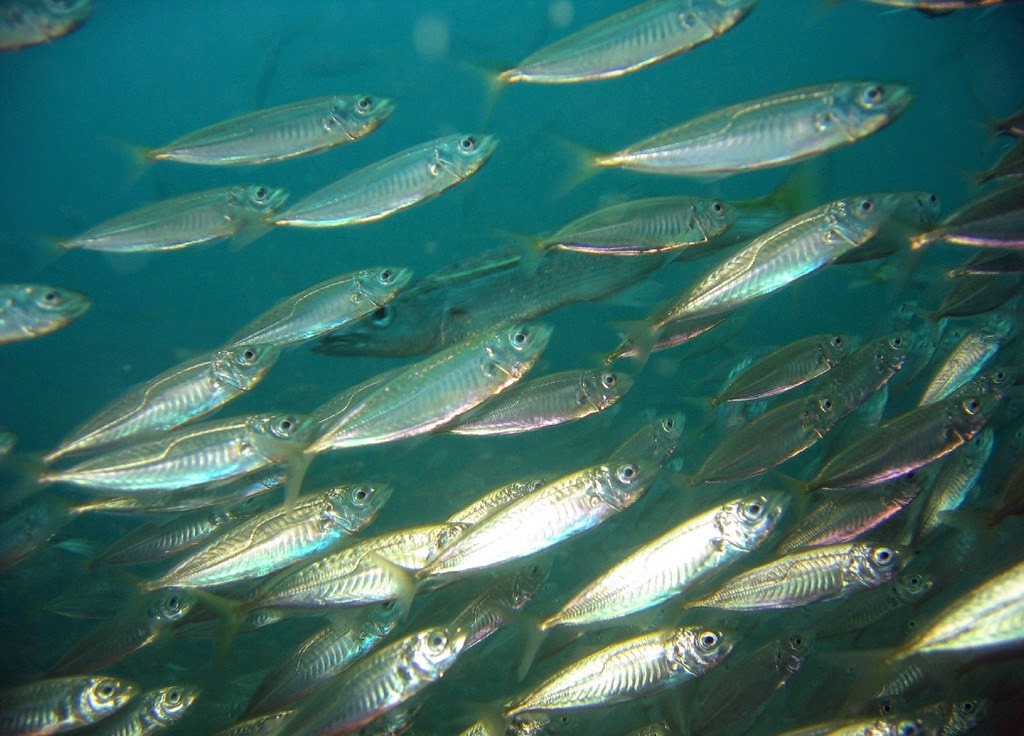In a ground-floor laboratory just off
Washington Square Park, in New York, a shoal of black polyurethane fish sat in
an open cardboard box, Nicola Twilley writes for The New Yorker.
According to their keeper, Leif Ristroph, an assistant
professor of mathematics at New York University, the fish—each about five
inches long and with the slight bug eyes of a juvenile—had been cast by a
taxidermist in Florida from a mold of a "freshly euthanized" rainbow trout.
Hardly sporting-trophy material to begin with, they had gotten somewhat dinged
up while in Ristroph’s custody.
Still clearly visible along their flanks and
around their snouts, however, was the reason for their existence: a series of
bumps called the lateral line. Biologists have known for years that these
bumps, which are sensitive to water pressure, allow fish to orient themselves
in their environments, navigating turbulent waters and chasing prey. But, until
earlier this year, when Ristroph and two of his colleagues published a paper on
the lateral line in the journal Physical Review Letters, one question remained
unanswered: Why, in all but a very few species of fish, are the bumps arranged
in more or less the same way?
“What might be the
function of so perforated a passage, I shall not yet venture to decide,” he
wrote.
“I have found it empty, without even a trace of slimy fluid.”
If Steno
had been able to look closer, he may have found his slimy fluid; by the start
of the twentieth century, biologists had worked out that each bump in the
lateral line contains a gelatinous blob that is embedded with tiny hair cells.
The hairs wobble in response to changes in water pressure, and their movement
is translated into an electrical impulse in a nearby nerve. (This system is the
aquatic analogue of the human inner ear, whose hair cells allow us both to hear
and to maintain our balance.)
What interested Ristroph was less the
workings of the lateral line than its placement. For their study, he and his
co-authors, James Liao and Jun Zhang, examined the fluid dynamics of a swimming
rainbow trout. Since, as Liao pointed out, “you can’t put pressure sensors on a
fish and have it behave normally,” they used the polyurethane stand-ins,
mounting them one at a time in a water-filled mechanical loop surrounded by
cameras.
They added hundreds of small glass particles to the water, then
covered the whole contraption with a large cardboard box, which provided a dark
background for (and some eye protection from) a powerful green laser situated
underneath. As water slipped past the stationary fish, the laser light bounced
off the moving glass particles, turning them into tracers.
What the team found, after adjusting
various settings in the tank and calculating the speed and trajectory of the
tracers, is that the bumps in the lateral line correspond to the points on a
fish’s body where the surrounding water exerts its greatest hydrodynamic
pressure. In other words, fish have sprouted flow-sensing antennae exactly
where they get the best signal, no matter the conditions.
“They have figured
out how to be as lazy as possible,” Ristroph said. The finding that an animal’s
sensory apparatus is perfectly suited to its environment may seem like
underwhelming news, but it is likely to have effects beyond biology and
mathematics.
“Usually, when something is the same across species, there’s a
reason for it,” he said.
“Presumably they have lots of other tricks that we
don’t know.”
The Aquaculturists
This blog is maintained by The Aquaculturists staff and is supported by the
magazine International Aquafeed which is published by Perendale Publishers Ltd
For additional daily news from aquaculture around the world: aquaculture-news


No comments:
Post a Comment